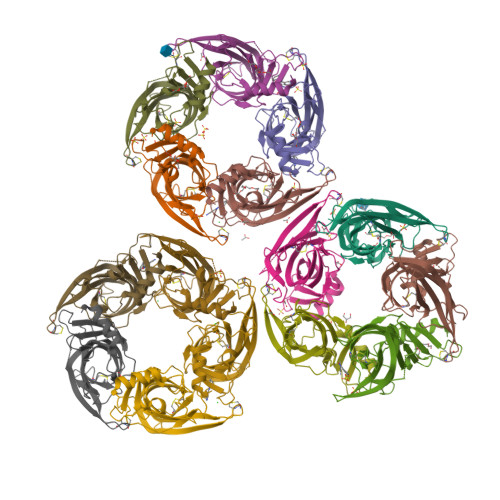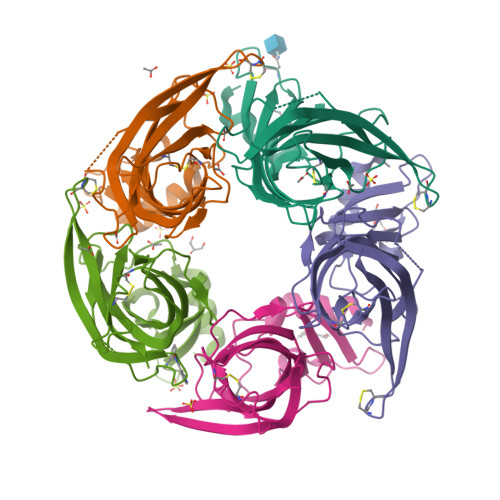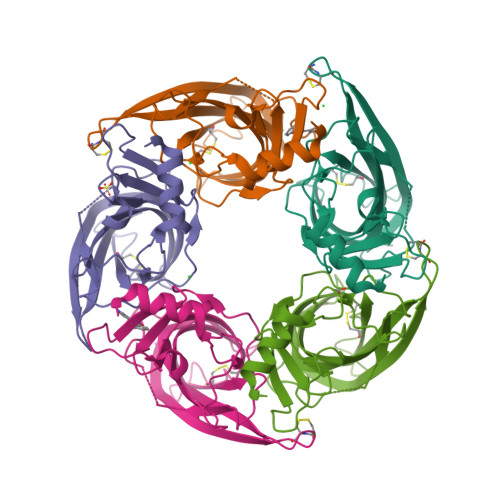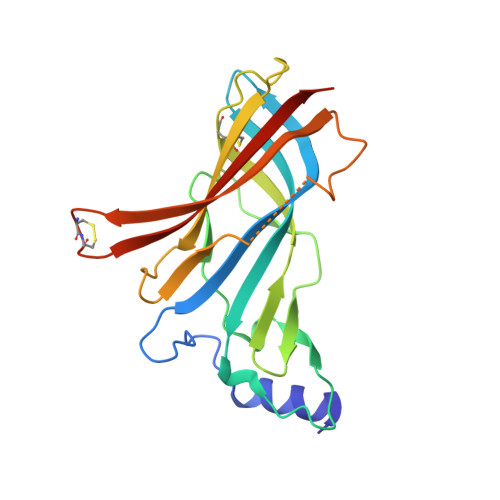Structural and functional studies of the modulator NS9283 reveal agonist-like mechanism of action at alpha 4 beta 2 nicotinic acetylcholine receptors.
Olsen, J.A., Ahring, P.K., Kastrup, J.S., Gajhede, M., Balle, T.(2014) J Biological Chem 289: 24911-24921
- PubMed: 24982426
- DOI: https://doi.org/10.1074/jbc.M114.568097
- Primary Citation of Related Structures:
4NZB - PubMed Abstract:
Modulation of Cys loop receptor ion channels is a proven drug discovery strategy, but many underlying mechanisms of the mode of action are poorly understood. We report the x-ray structure of the acetylcholine-binding protein from Lymnaea stagnalis with NS9283, a stoichiometry selective positive modulator that targets the α4-α4 interface of α4β2 nicotinic acetylcholine receptors (nAChRs). Together with homology modeling, mutational data, quantum mechanical calculations, and pharmacological studies on α4β2 nAChRs, the structure reveals a modulator binding mode that overlaps the α4-α4 interface agonist (acetylcholine)-binding site. Analysis of contacts to residues known to govern agonist binding and function suggests that modulation occurs by an agonist-like mechanism. Selectivity for α4-α4 over α4-β2 interfaces is determined mainly by steric restrictions from Val-136 on the β2-subunit and favorable interactions between NS9283 and His-142 at the complementary side of α4. In the concentration ranges where modulation is observed, its selectivity prevents NS9283 from directly activating nAChRs because activation requires coordinated action from more than one interface. However, we demonstrate that in a mutant receptor with one natural and two engineered α4-α4 interfaces, NS9283 is an agonist. Modulation via extracellular binding sites is well known for benzodiazepines acting at γ-aminobutyric acid type A receptors. Like NS9283, benzodiazepines increase the apparent agonist potency with a minimal effect on efficacy. The shared modulatory profile along with a binding site located in an extracellular subunit interface suggest that modulation via an agonist-like mechanism may be a common mechanism of action that potentially could apply to Cys loop receptors beyond the α4β2 nAChRs.
Organizational Affiliation:
From NeuroSearch A/S, Pederstrupvej 93, 2750 Ballerup, Denmark, the Faculty of Health and Medical Sciences, University of Copenhagen, 2100 Copenhagen, Denmark, the Faculty of Pharmacy, The University of Sydney, Sydney, New South Wales 2006, Australia, and.



























